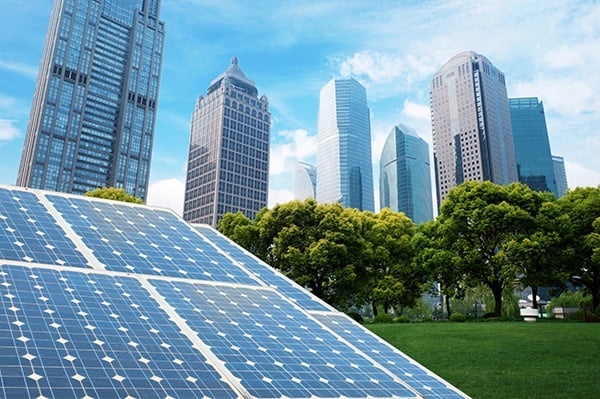
Green commercial real estate buildings represent half of the picture in making business more environmentally friendly. While an efficient building saves energy, more sustainable usage practices can turn any building green. The field of green leasing addresses the tenants' role in increasing sustainability.
A green lease isn't complicated. Most of it is just like any other leasing document. What makes it a green commercial real estate arrangement is that it contains a few extra terms that define both the landlord's and tenant's roles. The landlord commits to provide a certain degree of building environmental performance while the tenant agrees to meet certain standards for sustainability and energy efficiency.
One of the most powerful factors of a green lease is that tenants in any building can sign them. While certifications like LEED remain an important part of the green commercial real estate industry, a tenant that signs -- and adheres to -- a green lease in a non-LEED building could very well save more energy than a non-green tenant in a LEED property that hasn't committed to be sustainable.
4 Markets to Watch for LEED Certified Buildings in 2015
Green leases, as with the entire green commercial real estate field, do more than just save energy. While there might be some additional cost in choosing a green building, green leases save money. Put simply, if you use fewer resources, you pay for fewer resources. You don't need special equipment to shut your lights off at night or to set your HVAC system to be a little warmer in summer or cooler in winter.
A green lease might also improve your relationship with your landlord. When you negotiate your tenancy, the process can get a bit adversarial at times as both you and your landlord try to extract as much from each other as possible. Green commercial real estate provisions, on the other hand, are based on teamwork and partnership. For a green lease to work, you and your landlord have to agree on what you will do with each other and how you will report to each other. This introduces a note of collaboration into the process and sets the stage for a better working relationship throughout your tenancy.
Green leases are good for your company's public image. The entire green leasing field is beginning to attract more attention. The US Department of Energy recently awarded prizes to Green Lease Leaders, and organizations like the Institute for Market Transformation are starting to study the field. Even the US Green Building Council has gotten in the act. They consider the presence of green leases in awarding points for the LEED-CI (Commercial Interiors) certification.
Finally, green leases are something that just about the entire industry agrees on. When polled, majorities of tenants state that they are focused on making their occupancies greener. More and more owners are interested in green commercial real estate. The General Services Administration, which handles most of the federal government's leasing, also supports green leasing principles. All of these factors point to a trend that means that your next lease should almost definitely be a green one.
Other great articles:
The Importance of Good Co-Tenants in Retail
LEED Certified Buildings: The Savvy Tenant's Choice
How to Manage Your Commercial Real Estate Portfolio
Subscribe to our blog for more CRE tips!!








